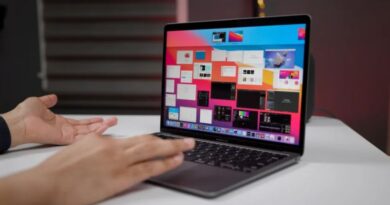How to reset the NVRAM, PRAM, and SMC on your Mac
If you think you’re Apple MacBook or iMac computers are not operating as they should, you may need to do some maintenance from time to time. One option was to reset a more mature Mac. If you possess a recently manufactured Apple MacBook laptop that features an M1 CPU. You do not need to reset the NVRAM, PRAM, and SMC on your Mac
This is because when your computer initially comes on, its fresh M1 Silicon and NVRAM are both examined. Figuring out automatically if its NVRAM needs to be reset. To manually force a reset of your NVRAM, PRAM, and SMC, you can nonetheless turn off your M1 Mac, wait a little period, and then restart it. Much easier than using the keyboard shortcuts for Macs with Intel CPUs described below.
Resetting the NVRAM, PRAM, and SMC on Intel Macs
If your older Mac computers don’t have Intel CPUs, you should use those instead of Apple’s new M1 processors. The NVRAM, PRAM, and SMC on your Mac can occasionally be cleaned to improve performance and ensure error-free operation. This brief lesson will show you how to reset each one independently, allowing you to fix any issues you may have with your Mac computer, such as difficulties starting it up following an update or issues with a specific software. Software issues are often to blame for the requirement to update the computer’s non-volatile random access memory (NVRAM) or parameter random access memory (PRAM) (NVRAM).
To reset the Mac NVRAM and PRAM
It’s critical to be aware that a number of settings, including volume, mouse settings, keyboard preferences, and volume levels, might be returned to their defaults before you reset your NVRAM or PRAM. The operation will essentially result in nothing changing.
- Shut off the OS on your Mac.
- Press the power button to restart your Mac.
- As soon as possible, simultaneously press and hold down the keys Command, Option, P, and R on your keyboard.
- Keep hitting the keys until the machine restarts and the start-up time reappears. Or the Apple logo is displayed on Macs with the T2 Security Chip.
- After the cycle is over, let go of every keyboard key and allow your Apple computer function normally.
Reset the SMC
You might need to reset the system management controller (SMC), which regulates the hardware components of your computer, if you suffer issues with your keyboard, cooling fans, power buttons, or other physically attached components to your Mac computer.
The SMC of the MacBook with a T2 Security Chip has to be reset. Systems from 2018 and 2020.
- Shut off your Mac.
- Depress the power button for 10 seconds to restart your MacBook.
- Has the issue been resolved?
- If not, simultaneously press and hold the “Left Option Key,” “Left Control Key,” and the “Right Shift Key” for around seven seconds.
- Wait a few seconds after simultaneously releasing all of the keys before restarting your computer.
Old MacBooks laptops with removable batteries
Resetting the SMC on older, pre-2018 Mac laptops with removable batteries. Put the battery back in your Mac after turning it off, holding down the power button for five seconds, then turning it back on.
For Mac desktop and laptop computers with T2 and older CPUs, resets. For me, shutting off the power is the most effective way to reset the SMC chip.
- Power down your Mac.
- Restart your computer ten seconds after clicking the power button.
- Was the problem fixed?
- If not, cut the power supply to your Mac off from the back.
- After 30 seconds have gone, hold off reconnecting the power cable for 10 more seconds.
- Power on your Mac as normal.
If you want more help or wish to book a time to talk with an Apple Genius regarding your Mac-related issues, please visit the official Apple Support website.




